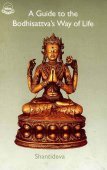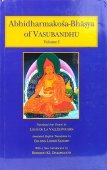Arhat: 12 definitions
Introduction:
Arhat means something in Buddhism, Pali, Hinduism, Sanskrit, Jainism, Prakrit, the history of ancient India. If you want to know the exact meaning, history, etymology or English translation of this term then check out the descriptions on this page. Add your comment or reference to a book if you want to contribute to this summary article.
In Hinduism
Purana and Itihasa (epic history)
Source: Cologne Digital Sanskrit Dictionaries: The Purana Index1a) Arhat (अर्हत्).—A king of Konka, Venka, and Kuṭaka led astray by the teachings of Ṛṣabha. Gave up his svadharma and adopted the path of heretics.*
- * Bhāgavata-purāṇa V. 6. 9.
1b) A name of Śiva.*
- * Brahmāṇḍa-purāṇa III. 72. 173.

The Purana (पुराण, purāṇas) refers to Sanskrit literature preserving ancient India’s vast cultural history, including historical legends, religious ceremonies, various arts and sciences. The eighteen mahapuranas total over 400,000 shlokas (metrical couplets) and date to at least several centuries BCE.
Ganitashastra (Mathematics and Algebra)
Source: archive.org: Hindu MathematicsArhat (अर्हत्) represents the number 24 (twenty-four) in the “word-numeral system” (bhūtasaṃkhyā), which was used in Sanskrit texts dealing with astronomy, mathematics, metrics, as well as in the dates of inscriptions and manuscripts in ancient Indian literature.—A system of expressing numbers by means of words arranged as in the place-value notation was developed and perfected in India in the early centuries of the Christian era. In this system the numerals [e.g., 24—arhat] are expressed by names of things, beings or concepts, which, naturally or in accordance with the teaching of the Śāstras, connote numbers.

Ganitashastra (शिल्पशास्त्र, gaṇitaśāstra) refers to the ancient Indian science of mathematics, algebra, number theory, arithmetic, etc. Closely allied with astronomy, both were commonly taught and studied in universities, even since the 1st millennium BCE. Ganita-shastra also includes ritualistic math-books such as the Shulba-sutras.
In Buddhism
Theravada (major branch of Buddhism)
Source: Dhamma Study: Introduction to the DhammaThe Arhat or "Worthy One" has broken all ten fetters and has won liberation in this life.
What happens to an arahant when he dies? He has eliminated all unwholesome tendencies from his character including the desire to go on being born. Having become enlightened during this life, he will die at the time when his lifespan has expired. Since there is no more desire to go on, when the last moment of life for the arahant finishes it is not followed by another rebirth consciousness. When we die, it is immediately followed by another moment (of the next life); when an arahant dies, that is all. No more experience. No more rebirth. This is called by the Buddha the only true peace.
Theravāda is a major branch of Buddhism having the the Pali canon (tipitaka) as their canonical literature, which includes the vinaya-pitaka (monastic rules), the sutta-pitaka (Buddhist sermons) and the abhidhamma-pitaka (philosophy and psychology).
Mahayana (major branch of Buddhism)
Source: Wisdom Library: Maha Prajnaparamita SastraArhat (अर्हत्) is a synonym for the Buddha according to the 2nd century Mahāprajñāpāramitāśāstra (chapter IV).
a) Ara means enemy (ari) and hat means to kill (han). The expression therefore means “killer of enemies”.
b) Furthermore, A marks negation and rahat means ‘to be born’. The expression means, therefore, “unborn”. The seeds (bīja) of the mind of the Buddha (buddhacitta) ‘do not arise’ in the field of rebirths, for ignorance (avidyā) in him has been dissolved.
c) Finally, Arhat means worthy (arhat) of receiving worship (pūja). The fetters (saṃyojana) have been cut in the Buddha, he has attained omniscience (sarvajñāta); therefore he merits receiving the worship of beings in heaven and on earth. This is why the Buddha is called Arhat.
Note: Buddhaghosa’s explanations of Arhat (Arahant): “Because he is far away (āraka) [from the passions], because he has destroyed the enemies (ari) [i.e., the passions], because he has broken the spokes (ara) [of the wheel of existence], because he is worthy (araha) of receiving the necessities, because he stays apart from evil actions, for all these reasons the Blessed One is called Arahant”.
Definition of Arhat according to the 2nd century Mahāprajñāpāramitāśāstra chapter VI:
a) Ara means enemy (ari) and hat means to kill (han). He who has destroyed all these enemies that are called the afflictions (kleśa) is called an Arhat.
b) Furthermore, the Arhats who have destroyed all the impurities (kṣīṇāsrava) deserve (arhanti) veneration (pūja) by the gods and men of all the universes (loka).
c) Finally, a designates negation and rahat designates birth. He who will never again be reborn in future generations is called Arhat.

Mahayana (महायान, mahāyāna) is a major branch of Buddhism focusing on the path of a Bodhisattva (spiritual aspirants/ enlightened beings). Extant literature is vast and primarely composed in the Sanskrit language. There are many sūtras of which some of the earliest are the various Prajñāpāramitā sūtras.
General definition (in Buddhism)
Source: Buddhist Door: GlossaryArhat in Sanskrit, Arahat in Pali. Literally, man of worth, honourable one. There are two kinds of arhats, namely, the Sound hearing arhat (Sravaka) and the Enlightened to condition arhat (Praetyka Buddha). The former attains the wisdom to understand the Four Noble Truth, while the latter attains the wisdom to understand the Law of Dependent Origination or the Twelve Links of Dependent Origination. They represent two vehicles, who "comprehend for their own sake". As they pay attention to themselves and not to others, they are incapable of genuine and equal enlightenment. There are four noble stages of fruition in the Arhat Path.
In Jainism
General definition (in Jainism)
Source: Google Books: Jaina IconographyArhat (अर्हत्).—They are called arhats because they deserve the worship by celestials with mahāprātihāryas etc., or because they kill (hantā) the enemy (ari) in tthe form of rajas (binding matter), or because they have nothing to conceal. They are Jinas because they conquer attachment, dislike, infatuation etc.

Jainism is an Indian religion of Dharma whose doctrine revolves around harmlessness (ahimsa) towards every living being. The two major branches (Digambara and Svetambara) of Jainism stimulate self-control (or, shramana, ‘self-reliance’) and spiritual development through a path of peace for the soul to progess to the ultimate goal.
India history and geography
Source: Cologne Digital Sanskrit Dictionaries: Indian Epigraphical GlossaryArhat.—(EI 7-1-2), ‘twentyfour’. (CII 3; LL), Buddhist and Jain; a class of saints. Note: arhat is defined in the “Indian epigraphical glossary” as it can be found on ancient inscriptions commonly written in Sanskrit, Prakrit or Dravidian languages.

The history of India traces the identification of countries, villages, towns and other regions of India, as well as mythology, zoology, royal dynasties, rulers, tribes, local festivities and traditions and regional languages. Ancient India enjoyed religious freedom and encourages the path of Dharma, a concept common to Buddhism, Hinduism, and Jainism.
Languages of India and abroad
Sanskrit dictionary
Source: DDSA: The practical Sanskrit-English dictionaryArhat (अर्हत्).—a. [arha-śatṛ]
1) Worthy, deserving, deserving respect, respectable, adorable; त्वमर्हतां प्राग्रसरः स्मृतोऽसि नः (tvamarhatāṃ prāgrasaraḥ smṛto'si naḥ) Ś.5.15; R.5.25;1.55; Kumārasambhava 6.56; Manusmṛti 3.128.
2) Praised, celebrated (stuta, khyāta).
3) Worthy of, deserving, entitled to (mostly Ved.). m.
1) A Buddha; the highest rank in Buddhist hierarchy.
2) A superior divinity with the Jainas; सर्वज्ञो जितरागादिदोषस्त्रैलोक्यपूजितः । यथास्थितार्थवादी च देवोऽर्हन् परमेश्वरः (sarvajño jitarāgādidoṣastrailokyapūjitaḥ | yathāsthitārthavādī ca devo'rhan parameśvaraḥ) ||; see the word जैन (jaina) also.
-ttama a. most worthy or venerable; अर्हत्तमाय विप्राय तस्मै दत्तं महाफलम् (arhattamāya viprāya tasmai dattaṃ mahāphalam) Manusmṛti 3.128.
Source: Cologne Digital Sanskrit Dictionaries: Shabda-Sagara Sanskrit-English DictionaryArhat (अर्हत्).—mfn. (-rhan-rhantī-rhat) 1. Venerable, respectable. 2. Praised, celebrated. m. (-rhan) 1. A Jina or Jaina saint and teacher. 2. A Jaina, or follower of the doctrines of Jaina. 3. A religious mendicant of that sect. E. arha to worship, &c. and śatṛ affix, of the present participle.
Source: Cologne Digital Sanskrit Dictionaries: Monier-Williams Sanskrit-English Dictionary1) Arhat (अर्हत्):—[from arh] mfn. deserving, entitled to ([accusative]), [Ṛg-veda]
2) [v.s. ...] used in a respectful address for arhasi, [Pāṇini 3-2, 133], able, allowed to ([accusative]), [Ṛg-veda]
3) [v.s. ...] worthy, venerable, respectable, [Śatapatha-brāhmaṇa; Aitareya-brāhmaṇa] etc. (See arhat-tama below)
4) [v.s. ...] praised, celebrated, [cf. Lexicographers, esp. such as amarasiṃha, halāyudha, hemacandra, etc.]
5) [v.s. ...] m. (an) a Buddha who is still a candidate for Nirvāṇa
6) [v.s. ...] (= kṣapaṇaka) a Jaina
7) [v.s. ...] an Arhat or superior divinity with the Jainas
8) [v.s. ...] the highest rank in the Buddhist hierarchy, [cf. Lexicographers, esp. such as amarasiṃha, halāyudha, hemacandra, etc.]
Source: Cologne Digital Sanskrit Dictionaries: Yates Sanskrit-English DictionaryArhat (अर्हत्):—[(t-ntī-t) a.] Venerable, celebrated. 1. m. A Jaina sage.
Source: DDSA: Paia-sadda-mahannavo; a comprehensive Prakrit Hindi dictionary (S)Arhat (अर्हत्) in the Sanskrit language is related to the Prakrit word: Araha.
Sanskrit, also spelled संस्कृतम् (saṃskṛtam), is an ancient language of India commonly seen as the grandmother of the Indo-European language family (even English!). Closely allied with Prakrit and Pali, Sanskrit is more exhaustive in both grammar and terms and has the most extensive collection of literature in the world, greatly surpassing its sister-languages Greek and Latin.
See also (Relevant definitions)
Starts with (+4): Arhaddatta, Arhadvadha, Arhanmata, Arhata, Arhataganneru, Arhataghaticakra, Arhataghatichakra, Arhatamata, Arhatapatra, Arhate, Arhathaganneru, Arhati, Arhatpada, Arhatparameshvara, Arhatpratibimba, Arhatpratime, Arhatpravacana, Arhatstotra, Arhattama, Arhattara.
Ends with: Abhyarhat, Anarhat, Barhat, Darhat, Diarhat, Svarhat, Tarhat, Varhat.
Full-text (+731): Araha, Adhishvara, Anantajit, Arhattama, Ashaiksha, Anantavirya, Ajitabala, Vimala, Abhayada, Jagatprabhu, Anula, Arhattva, Ajita, Vasupujya, Nirvanasamjna, Shravak, Arhan, Arukacaraṇam, Ushitavant, Rahula.
Relevant text
Search found 94 books and stories containing Arhat; (plurals include: Arhats). You can also click to the full overview containing English textual excerpts. Below are direct links for the most relevant articles:
Bodhisattvacharyavatara (by Andreas Kretschmar)
Text Section 52-55 < [Khenpo Chöga’s Oral Explanations]
Text Section 56-61 < [Khenpo Chöga’s Oral Explanations]
Text Section 309 < [Khenpo Chöga’s Oral Explanations]
Trishashti Shalaka Purusha Caritra (by Helen M. Johnson)
Part 9: Future Arhats < [Chapter XIII - Śrī Mahāvīra’s nirvāṇa]
Part 18: Incarnation as god < [Chapter I - Previous births of Mahāvīra]
Part 6: Climbing of Astāpada < [Chapter IX - Stories of the ploughman]
The Sutra of Queen Śrīmālā of the Lion’s Roar
Maha Prajnaparamita Sastra (by Gelongma Karma Migme Chödrön)
Part 7 - Why Ānanda is not an arhat < [Chapter VI - The Great Bhikṣu Saṃgha]
Part 14 - Bringing innumerable beings to Arhathood by a single sermon < [Chapter LI - Seeing all the Buddha Fields]
II. Simultaneously preaching and converting < [Part 13 - Carrying out abhisaṃbodhi, preaching and conversions all in the same day]
The travels of Fa-Hian (400 A.D.) (by Samuel Beal)
The gods of northern Buddhism (by Alice Getty)
Related products


